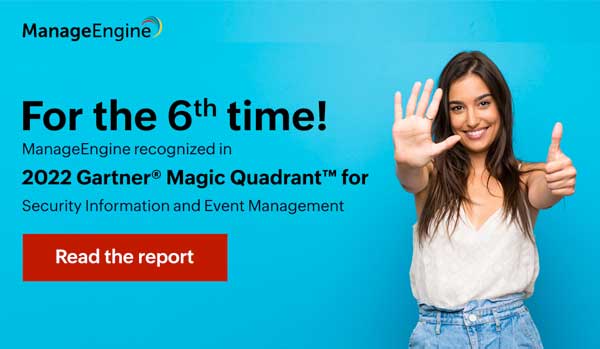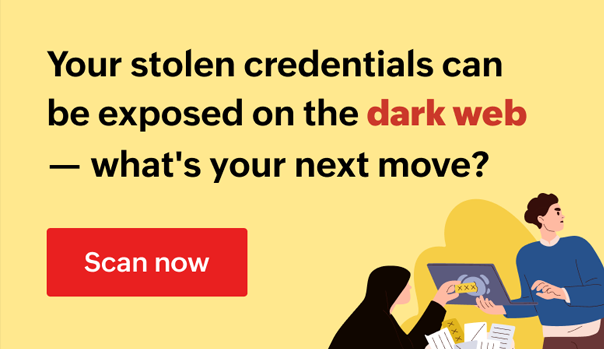How ManageEngine helps you meet PCI DSS v4.0 compliance requirements
Log360 provides out-of-the-box reports for PCI DSS v4.0 compliance.
| Requirement Number | Requirement Description | Product | Capability/ Feature | Summary Reports |
|---|---|---|---|---|
| 1.2 Network security controls (NSCs) are configured and maintained | This requirement mandates the establishment of a secure network architecture by implementing appropriate network segmentation and network security controls (NSCs). This involves isolating the cardholder data environment (CDE) from other networks to contain the potential impact of a breach. | Log360 | AWS Network Security Groups VPC Activity Route 53 Traffic Analysis Reports Salesforce Overview Network Device Attack Reports Network Device Configuration Reports |
|
| 1.2.7 | Configurations of NSCs are reviewed at least once every six months to confirm they are relevant and effective. | Log360 | Router Configuration Report | |
| 1.3.1 | Inbound traffic to the CDE is restricted to only allow traffic that is necessary. All other traffic is specifically denied. | Log360 | Firewall Allowed Traffic Reports | |
| 1.3.3 | NSCs are installed between all wireless networks and the CDE, regardless of whether thewireless network is a CDE, such that:
|
Log360 | Firewall Denied and Allowed Traffic Reports | |
| 1.5 | Security controls are implemented on any computing devices, including company- and employee-owned devices, that connect to both untrusted networks (including the Internet) and the CDE as follows:
|
Log360 | Windows Firewall Auditing Reports | |
| 2.2 | 2.2.4 4 Only necessary services, protocols, daemons, and functions are enabled, and all unnecessary functionality is removed or disabled. | Log360 | New service Installed, Yum installs, Router Top configuration changes, Logon Reports Unix Logon Reports |
|
| ADManager Plus | Password Unchanged, All Users, and Inactive Users reports. | |||
| 7.1 | Processes and mechanisms for restricting access to system components and cardholder data by business need to know are defined and understood | Log360 | WorkGroup Group Auditing Reports WorkGroup Policy Changes Reports File Permission Reports File Access Failed Attempts MSSQL DDL Changes MSSQL DML Changes PostgreSQL DDL Changes PostgreSQL DML Changes User Administration Activities Mailbox Permission Changes Mail Status Report Organization Traffic By Volume Organization Traffic By Messages IAM Activity AWS Network Security Groups File Changes Audit Salesforce Content Activity |
|
7.2.1 An access control model is defined and includes granting access as follows:
|
ADManager Plus | Delegation, NTFS reports | ||
7.2.2 Access is assigned to users, including privileged users, based on:
|
||||
| 7.2.3 Required privileges are approved by authorized personnel. | ADManager Plus | Access Certification Campaigns | ||
7.2.4 All user accounts and related access privileges, including third-party/vendor accounts, are reviewed as follows:
|
ADManager Plus | Access Certification Campaigns, NTFS permissions management and reporting | ||
7.2.5 All application and system accounts and related access privileges are assigned and managed as follows:
|
ADManager Plus | |||
7.2.6 All user access to query repositories of stored cardholder data is restricted as follows:
|
ADManager Plus | |||
| 7.3.1 An access control system(s) is in place that restricts access based on a user’s need to know and covers all system components | ADManager Plus | Automation and Access Certification Campaign | ||
| 7.3.2 The access control system(s) is configured to enforce permissions assigned to individuals, applications, and systems based on job classification and function. | ADManager Plus | Access Certification Campaign | ||
| 8.1 | Processes and mechanisms for identifying users and authenticating access to system components are defined and understood | Log360 | User Auditing Reports User Management Reports Group Auditing Reports GPO Reports GPO Auditing Reports WorkGroup User Auditing Reports WorkGroup Group Auditing Reports WorkGroup Policy Changes Reports All File / Folder changes File Permission Reports File Access Failed Attempts MSSQL DDL Changes MSSQL Security Changes MSSQL DML Changes Printer Auditing Reports PostgreSQL DDL Changes PostgreSQL DML Changes User Administration Activities Mailbox Permission Changes User Logon Activities IAM Activity AWS Network Security Groups File Changes Audit Cloud User Login Activity Salesforce Setup Audit Trail |
|
| 8.2.1 All users are assigned a unique ID beforeaccess to system components or cardholder data isallowed. | ADManager Plus | User management and reporting | ||
8.2.4 Addition, deletion, and modification of user IDs, authentication factors, and other identifier objects are managed as follows:
|
ADManager Plus | Workflow, Automation, Delegation, Reporting | ||
| 8.2.5 Access for terminated users is immediately revoked. | ADManager Plus | Event-driven automation | ||
| 8.2.6 Inactive user accounts are removed or disabled within 90 days of inactivity | ADManager Plus | User automation, Inactive Users report | ||
8.2.7 Accounts used by third parties to access, support, or maintain system components via remote access are managed as follows:
|
ADManager Plus | Terminal Services management | ||
| 8.2.8 If a user session has been idle for more than 15 minutes, the user is required to re-authenticate to re-activate the terminal or session. | ADManager Plus | Terminal Services management | ||
| 8.3.3 User identity is verified before modifying any authentication factor. | ADSelfServices Plus | |||
8.3.4 Invalid authentication attempts are limited by:
|
ADSelfServices Plus | |||
8.3.5 If passwords/passphrases are used as authentication factors to meet Requirement 8.3.1, they are set and reset for each user as follows:
|
ADSelfServices Plus and ADManager Plus | ADManager Plus: User management | ||
8.3.6 If passwords/passphrases are used as authentication factors to meet Requirement 8.3.1, they meet the following minimum level of complexity:
|
ADSelfServices Plus | ADManager Plus: GPO management | ||
| 8.3.7 Individuals are not allowed to submit a new password/passphrase that is the same as any of the last four passwords/passphrases used. | ADSelfServices Plus | |||
8.3.9 If passwords/passphrases are used as the only authentication factor for user access (i.e., inany single-factor authentication implementation) then either:
|
ADManager Plus | Automation | ||
| 8.3.10.1 Passwords/passphrases are changed at least once every 90 days, | ADSelfServices Plus | |||
8.3.11 Where authentication factors such as physical or logical security tokens, smart cards, or certificates are used:
|
ADSelfServices Plus | |||
| 8.4.2 MFA is implemented for all access into the CDE. | ADSelfServices Plus | |||
| 8.4.3 For remote access, MFA must be implemented either at the system, application, or network level. | ADSelfServices Plus | |||
8.5.1 MFA systems are implemented as follows:
|
ADSelfServices Plus | |||
| 8.6.3 Password change frequency and password complexity must vary based on the risk levels of user identities. | ADSelfServices Plus | |||
| 8.6 | Use of application and system accounts and associated authentication factors is strictly managed | Log360 | AD Logon Reports User Administration Activities User Logon Activities AWS Failed/Unauthorized Activity AWS User Activity Cloud User Login Activity Network Device Logon Reports |
|
| 8.4 | MFA is implemented for all remote networkaccess originating from outside the entity’s networkthat could access or impact the CDE as follows:
|
Log360 | Monitor RADIUS logon acitivity VPN logon acitivity reports |
|
| 10.1 | Processes and mechanisms for logging and monitoring all access to system components and cardholderdata are defined and documented. | Log360 | Individual User Action Report AD Logon Reports User Auditing Reports User Management Reports WorkGroup User Auditing Reports File Access Failed Attempts MSSQL DDL Changes MSSQL DML Changes PostgreSQL DDL Changes PostgreSQL DML Changes User Administration Activities Mailbox Permission Changes Mailbox Access User Logon Activities IAM Activity AWS User Activity File Changes Audit Cloud User Login Activity Windows Logon Reports Windows Logon Reports Terminal Service Session Windows User Access Windows Registry Changes Unix Logon Reports Unix User Access File Changes Network Device Logon Reports Network Device Configuration Reports Network Device Security Reports IAM Activity AWS User Activity AWS Failed/Unauthorized Activity File Changes Audit Route 53 Storage Activity Reports WAF Reports EC2 Reports Traffic Analysis Reports Salesforce Setup Audit Trail Cloud User Login Activity |
|
| 10.2 | Audit logs are implemented to support the detection of anomalies and suspicious activity, and the forensicanalysis of events. | Log360 | File Audit Reports Windows Logon Reports File Changes Unix Logon Reports File Changes Audit Storage Activity Reports Traffic Analysis Reports Cloud User Login Activity Windows Registry Changes AWS Config Reports AD Logon Reports WorkGroup Logon Reports MSSQL DDL Changes MSSQL Security Changes MSSQL DML Changes Printer Auditing Reports PostgreSQL DDL Changes PostgreSQL DML Change User Logon Activities IAM Activity File Changes Audit Network Device Logon Reports Salesforce Report Activity Salesforce Setup Audit Trail Substitute Logon Reports |
|
| 10.3 | Audit logs are protected from destruction and unauthorized modifications. | Log360 | Audit Events Dropped Event log automatic backup Security Log Full Error in EventLog Service Event Logging Service Shutdown Security Logs Cleared Event Logger Started Event Logs Cleared |
|
| 10.4 | Audit logs are reviewed to identify anomalies or suspicious activity | Log360 | Search based reports | |
| 10.5 | Audit log history is retained and available for analysis | Log360 | Log retention and archiving | File Deleted And Archived |
| 10.6.2 | Review logs of all other system components periodically based on the organization’s policies and risk management strategy, as determined by the organization’s annual risk assessment. | Log360 | Search based reports | |
| 10.2.1.2 Audit logs capture all actions taken by any individual with administrative access, including anyinteractive use of application or system accounts. | ADManager Plus | Admin Audit Report | ||
| 10.2.1.4 Audit logs capture all invalid logical access attempts. | ADManager Plus | Failed Logon Attempts report | ||
10.2.1.5 Audit logs capture all changes to identification and authentication credentials including, but not limited to:
|
ADManager Plus | Audit report | ||
10.2.2 Audit logs record the following details for each auditable event:
|
ADManager Plus | Audit report | ||
| 10.3.1 Read access to audit logs files is limited to those with a job-related need. | ADManager Plus | Delegation, Audit report | ||
| 10.3.2 Audit log files are protected to prevent modifications by individuals. | ADManager Plus | Audit report | ||
| 11.2 | 11.2.1.d If automated monitoring is used, examine configuration settings to verify the configuration will generate alerts to notify personnel | Log360 | Alerting | Alert Events |
| Log360 | ||||
| 11.5 | 11.5.1 Intrusion-detection and/or intrusion-prevention techniques are used to detect and/or prevent intrusions into the network as follows:
|
Log360 | Network Device Configuration Reports All File / Folder changesFile Permission Reports File Changes Audit |
|
11.5.2 A change-detection mechanism (for example, file integrity monitoring tools) is deployed as follows:
|
Log360 | Network Device Configuration Reports All File / Folder changes File Permission Reports File Changes Audit WorkGroup Policy Changes Reports File Permission Reports File Access Failed Attempts MSSQL DDL Changes MSSQL DML Changes PostgreSQL DDL Changes PostgreSQL DML Changes File Changes Audit Salesforce Content Activity |
||
| 12.11 | Additional requirement for service providers only: Perform reviews at least quarterly to confirm personnel are following security policies and operational procedures. Reviews must cover the following processes: Daily log reviews Firewall rule-set reviews Applying configuration standards to new systems Responding to security alerts Change management processes | Log360 | Daily Log Review |
Take the lead in data protection best practices with our unified SIEM solution!





